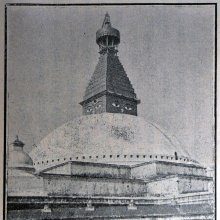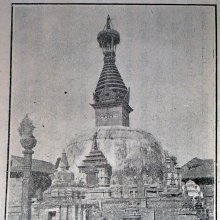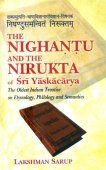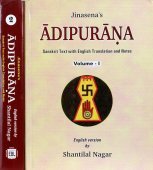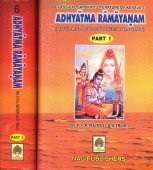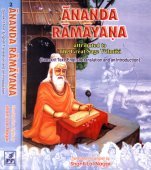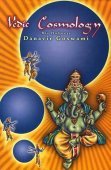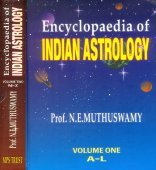Heaven: 3 definitions
Introduction:
Heaven means something in Hinduism, Sanskrit, the history of ancient India. If you want to know the exact meaning, history, etymology or English translation of this term then check out the descriptions on this page. Add your comment or reference to a book if you want to contribute to this summary article.
Images (photo gallery)
(+28 more images available)
In Hinduism
Pancaratra (worship of Nārāyaṇa)
Source: archive.org: Catalogue of Pancaratra Agama TextsThose seeking “Heaven” are advised to worship icons of Durgā, as discussed in the twenty-eighth chapter of the Naradiya-Samhita: a Pancaratra document comprising over 3000 verses in 30 chapters presenting in a narrative framework the teachings of Narada to Gautama, dealing primarily with modes of worship and festivals.—Description of the chapter [sarvadevatā-sthāpanavidhi]: Nārada describes the worship appropriate to each god for specified ends: [e.g., Durgā for heaven (59-65)] [...]. In discussing next the shrine dedicated to each, he describes their shapes, proportions, the building materials used, the types and postures of the icons contained therein, [...].

Pancaratra (पाञ्चरात्र, pāñcarātra) represents a tradition of Hinduism where Narayana is revered and worshipped. Closeley related to Vaishnavism, the Pancaratra literature includes various Agamas and tantras incorporating many Vaishnava philosophies.
India history and geography
Source: Google Books: The Crystal Mirror of Philosophical Systems (h)Heaven is known as “qian” and represents one of the “Eight Bagua” which refers to the trigrams of the Classic of Changes; they are known in Tibetan as pā bkwa brgyad.—Accordingly, [while describing the non-Buddhist Chinese traditions and confucian divination]: [...] At the time of the first Huang monarch, King Fu Xi, there emerged from the great Huang He (Yellow River) in the province now called Henan, a dragon-horse, with a midsection like a horse and a head and tail like a dragon. On its back were the bagua or eight designs (trigrams) [e.g., qian (heaven)]. Seeing them, Fu Xi created the bagua emblems. He expanded the eight bagua to sixty-four [hexagrams] by combining the eight trigrams with each other and explained them in a text he composed called Lianshan. [...]
Source: Singhi Jain Series: Ratnaprabha-suri’s Kuvalayamala-katha (history)Heaven (and Hell) were commonly depicted on the Saṃsāracakra paintings (representing scenes of heaven and hell), in ancient India, as mentioned in the Kathās (narrative poems) such as Uddyotanasūri in his 8th-century Kuvalayamālā (a Prakrit Campū, similar to Kāvya poetry).—Page 185.21 f.: Here follows a description of a printed scroll illustrating the Jaina conception of saṃsāracakra. [...] The saṃsāra-cakra illustrated the three worlds of hell, human world and the world of gods. [...] Then follows a description of the various hells depicted in the painting on cloth (p. 189.18-9). There is given also a description of the Svargaloka or the heavenly abode of Devī, Devakumāra and Indra seated in the Āsthāna or Saudharmasabhā (p. 189.32-3, p. 190.1-19).

The history of India traces the identification of countries, villages, towns and other regions of India, as well as mythology, zoology, royal dynasties, rulers, tribes, local festivities and traditions and regional languages. Ancient India enjoyed religious freedom and encourages the path of Dharma, a concept common to Buddhism, Hinduism, and Jainism.
See also (Relevant definitions)
Starts with: Heaven and earth, Heavenly abode, Heavenly Architect, Heavenly blue, Heavenly Eye, Heavenly flower.
Query error!
Full-text (+3094): Svarga, Urdhvaloka, Khagola, Suraloka, Gagana, Akashavani, Amartyabhuvana, Vaibhra, Dinmukha, Naka, Brahmaloka, Saurika, Diva, Tridiva, Svargarohana, Svar, Vaikuntha, Indra, Sagga, Svarloka.
Relevant text
Search found 501 books and stories containing Heaven, Heavens, The heaven; (plurals include: Heavens, Heavenses, The heavens). You can also click to the full overview containing English textual excerpts. Below are direct links for the most relevant articles:
Shurangama Sutra (with commentary) (English) (by Hsuan Hua)
Living beings without form < [Chapter 5 - The Twelve Categories of Living Beings]
Attachment to a refuge that is not actually a refuge < [Chapter 6 - The Consciousness Skandha]
The two roots of true and false are revealed < [Chapter 5 - The Way to Shamatha]
Saying 111 - The Living Will Not Die
Saying 11 - The Living Will Not Die
Ksitigarbha Bodhisattva Purvapranidhana Sutra
Chapter I - Spiritual Penetrations in the Palace of the Trayastrimsha Heaven
Chapter IX - The Names of Buddhas
The Religion and Philosophy of Tevaram (Thevaram) (by M. A. Dorai Rangaswamy)
Chapter 16 - Thirunarayur or Tirunaraiyur Citticcaram (Hymn 93) < [Volume 3.2 - Pilgrim’s progress: to Chola]
Chapter 3 - The final goal < [Volume 4.2.3 - Philosophy of God]
Introduction < [Volume 3.2 - Pilgrim’s progress: to Chola]
The civilization of Babylonia and Assyria (by Morris Jastrow)
Part IX < [Chapter IV - The Gods Of Babylonia And Assyria]
Part X < [Chapter IV - The Gods Of Babylonia And Assyria]
Part VI < [Chapter IV - The Gods Of Babylonia And Assyria]
Rig Veda (translation and commentary) (by H. H. Wilson)
Related products
(+4 more products available)
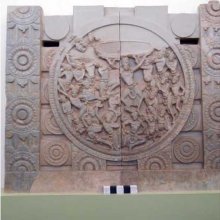
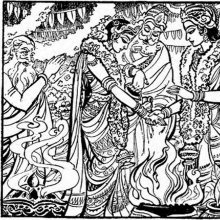
.jpg)
